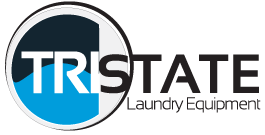When I make statements like the one following, I show how long I’ve been in the business or perhaps worse – my age. Back when I ran a plant, your boiler came on at 6:00 a.m. and went off hopefully by 6:00 p.m. IF you were lucky enough to be done with production. Back then, utilities ran just 3 – 4% of volume, and there was no need to have to control them.
Today utilities can run 7 – 9% of volume and are a critical management item for any operation. Because I am in and out of plants daily, I regularly see steam puffing out of return tank vents. I also hear water running out of the overflow when I step into boiler rooms. That’s money up in smoke or down the drain. Here are a few tips to help you control utility costs:
1. Check traps regularly for blow by.
•The easiest way is to buy an Infrared Temperature Gun.
•Take a reading on both the inlet and outlet of the trap.
•It should have a 40 plus degree differential.
•This indicates the trap is working properly.
•If it’s not working properly, repair or replace.
2. Insulate all steam lines – supply and return.
•This prevents steam loss and keeps the plant more comfortable in the summer.
•It’s also a safety requirement for pipes up to 7’ high.
3. Put a thermometer in one of the threaded couplings in the return tank for the boiler.
•Monitor the temperature in the tank with the ideal being around 180 degrees F.
•A higher temperature indicates trap blow by.
•Check for valves leaking between the boiler and return tank.
•A good way to determine if the check valves are working is to test the temperature of the feed water line from the pump to the boiler. It should also be 180 or less.
4. Be sure you have adequate make up air for combustion for maximum boiler efficiency
•A good rule of thumb is ½” of open incoming outside air for every 1,000 BTU’s of the boiler
•Weather is also a factor – both temperature and humidity. Keep in mind, you can control a lot but unfortunately not the weather.
5. Check your return tank float level.
•Make sure it seals off when your desired level is made.
•Be sure that level is BELOW the over flow of the return tank.
Running a dry cleaning operation isn’t like it was when I ran one – you just took care of customers and the rest fell into place. With reduced volume and smaller profit margins, we have to be cost conscious. We sure don’t want our profit going up in smoke or down the drain. I hope these tips help you increase your bottom line. Look for more cost saving tips in future blog posts.




I am looking for cheap and right boiler for my home.i have gone through many brands but did not satisfied. Can any one suggest me where to find right one.
ReplyDeleteBoilers Sale
What city are you in? I'll be glad to find you a local Parker Boiler rep. to help.
ReplyDelete